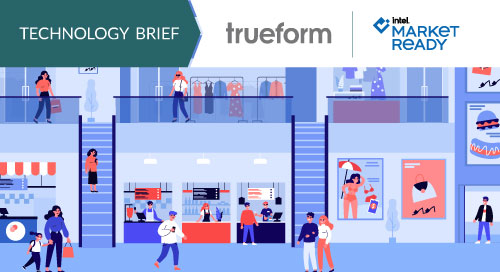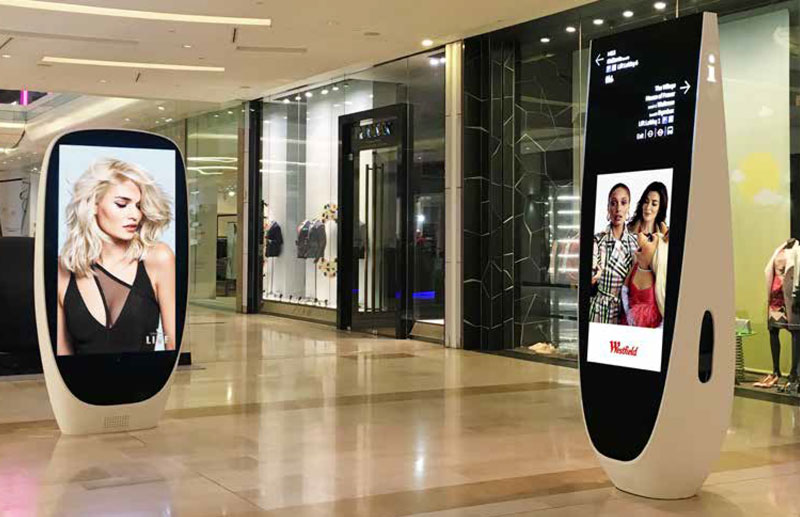Digital Signage Solutions: From Transportation to Retail

When you think of digital signage, you likely conjure images of eye-catching ads designed to entice consumers to make a purchase. Or maybe you think of the screens at the airport that provide you with your gate information. While using the tool for marketing and wayfinding can be effective, new applications can expand on the original vision by promoting powerful ideals like sustainability and community.
Case in point: mass transit. Dynamic digital signage solutions communicate real-time information that can increase use of public transportation, encouraging commuters to choose sustainable transportation options that promote a more carbon-neutral environment.
“One of the main things that’s deterred people from using forms of public transportation systems has been lack of real-time information,” says Jonathan Morley, CEO of Trueform Digital, a provider of digital signage solutions. “You may have a route with static printed information, but if the service has been held up for any reason, that information is out of date. People don’t like to wait. Digital signage tells potential customers when a particular service is due to arrive or depart, giving people confidence to plan their journey.”
Of course, the ability of digital signs to display advertising provides an opportunity to optimize its return on investment by generating revenue that can fund deployments. And as transportation methods evolve, digital signage can evolve, too, serving new purposes.
#DigitalSignage tells potential customers when a particular service is due to arrive or depart, giving people confidence to plan their journey. @trueformgroup via @insightdottech
From Smart City Applications to Retail Innovations
In addition to aiding travelers and commuters, smart signage and digital signs provide retailers with a way to engage shoppers. As stores embrace digital transformation, Trueform is leveraging four decades of experience with smart city applications to create sophisticated solutions that offer new opportunities for store owners and brands.
Today’s retailers find off-the-shelf digital signs to be limited in their number of features. Custom signs, such as those made by Trueform, can enhance branding, meet complex installation requirements, and provide more benefits to the viewer.
For example, London’s Westfield Shopping Centre, a world-leading retail and entertainment destination, wanted a state-of-the-art architectural design that went far beyond the typical flat-sided signs. Trueform deployed more than 170 digital advertising displays throughout the location, including unique interactive digital totems considered to be the centerpiece of the design (Figure 1).

“The shopping mall wanted a particular look and feel that matches their branding and corporate identity,” says Morley. “They employed the services of a creative design agency and architect. Because of our custom design and manufacturing capabilities, we were able to supply a product to their exacting requirements, taking the concept done by a designer and making it a reality.”
One Stop Shop Digital Signage Solutions
Trueform manufactures Intel® processor-based computing systems for its digital signage solutions, including screens, cameras, kiosks, and audio units. And the company provides the digital display interface software that delivers signage content like splashy ad graphics and real-time information.
The company offers its customers a one-stop shop, including audit, analysis, specification, design, and installation. Trueform also provides lifetime maintenance, monitoring the signs it installed with on-the-ground servicing for routine and emergency response.
“In London, we have about 30,000 pieces of infrastructure that we are responsible for,” says Morley. “And we provide a four-hour repair service 365 days a year if anything happens to the sign or a piece of hardware.”
To maximize the value of its displays, Trueform also works with a variety of specialist software partners to help create a customized end-to-end solution. It works with analytics companies that collect data for business strategies as well as information sharing. For example, Trueform recently installed a digital totem infrastructure with software that counts and displays the number of cyclists on a route in real time.
“Anybody that’s driving past that sign can see the numbers per day,” says Morley. “It demonstrates that a lot of people are using these cycle lanes. It encourages more people to ride their bikes and convinced the government to invest more money on bicycle safety options.”
As technology innovations continue, Morley believes that digital signage use will expand, providing more industries opportunities to benefit.
“We know that more and more industries will be making use of digital signage and there will be more technologies that can be used in conjunction with these solutions,” he says. “At the moment, it tends to be used for advertising and that’s not a bad thing. There’s far more that can be done to provide information to the general public. We can only see that increasing dramatically.”
This article was edited by Georganne Benesch, Associate Editorial Director for insight.tech.